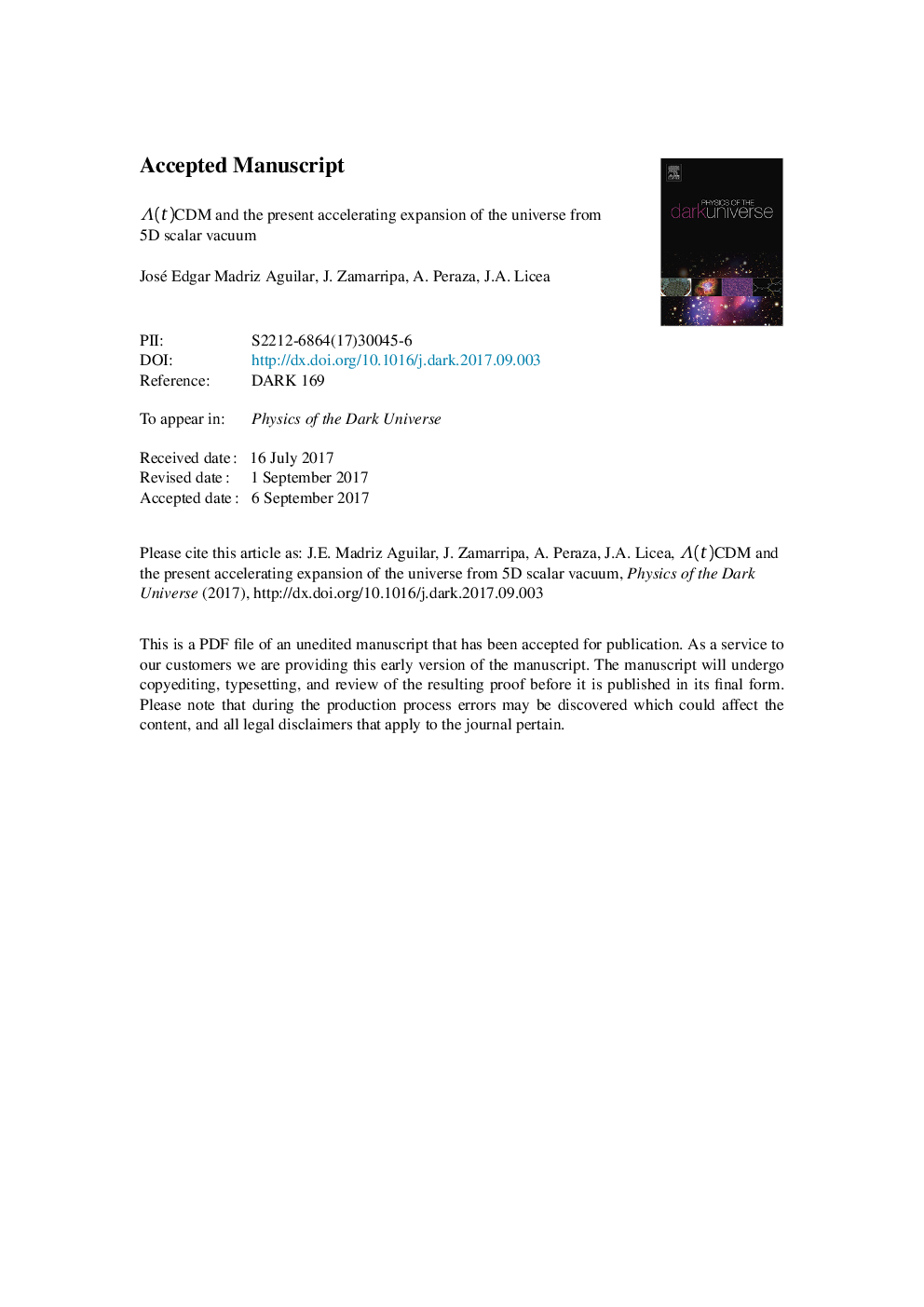| Article ID | Journal | Published Year | Pages | File Type |
|---|---|---|---|---|
| 5487888 | Physics of the Dark Universe | 2017 | 9 Pages |
Abstract
In this letter we investigate some consequences of considering our 4D observable universe as locally and isometrically embedded in a 5D spacetime, where gravity is described by a Brans-Dicke theory in vacuum. Once we impose the embedding conditions we obtain that gravity on the 4D spacetime is governed by the Einstein field equations modified by an extra term that can play the role of a dynamical cosmological constant. Two examples were studied. In the first we derive a cosmological model of a universe filled only with a cosmological constant. In the second we obtain a cosmological solution describing a universe filled with matter, radiation and a dynamical cosmological constant. We constrain the model by using the current observational data combination Planck + WP + BAO + SN. The present acceleration in the expansion of the universe is explained by the geometrically induced dynamical cosmological constant avoiding the introduction of a dark energy component and without addressing the underlying cosmological constant problem. Moreover, all 4D matter sources are geometrically induced in the same manner as it is usually done in the Wesson's induced matter theory.
Related Topics
Physical Sciences and Engineering
Physics and Astronomy
Astronomy and Astrophysics
Authors
José Edgar Madriz Aguilar, J. Zamarripa, A. Peraza, J.A. Licea,
